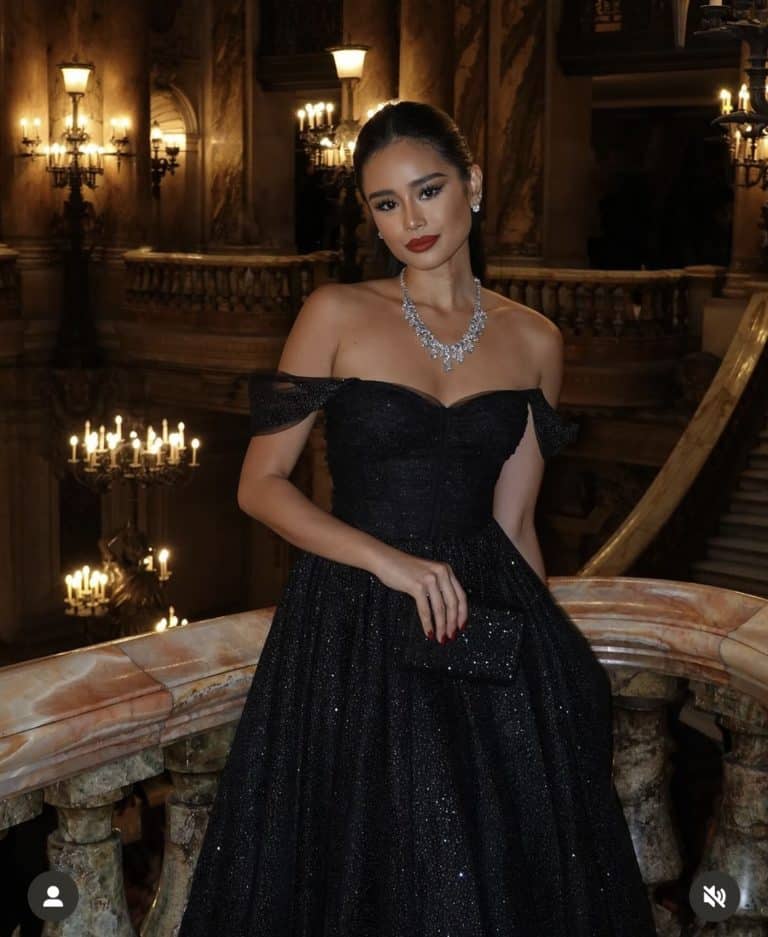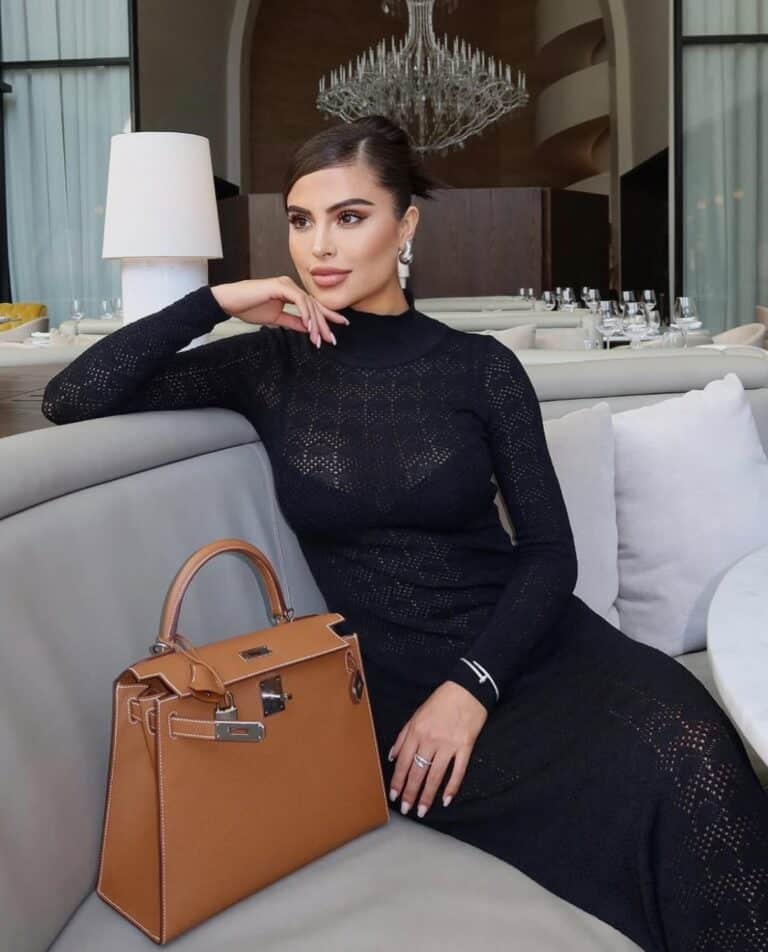Can Winters Wear Orange, Red, Olive Green, Cream, White and Black: Discover Your Color Palette
Can Winters Wear Orange: Understanding the Winter Seasonal Color Palette. Colors can significantly impact the way we look and feel. Understanding your seasonal color palette is essential in choosing the right colors that bring out the best in you. Winter is a beautiful season that gives us a chance to experiment with a range of warm and cool-toned colors. One common question we encounter is whether winters can wear orange. Orange is a warm and bright color that seems more suited for summer or autumn. This blog will discuss can winters wear orange and help you understand the winter seasonal color palette.
Winter is classified as a cool season, with blue and red undertones. However, winters can also wear warm tones, but it should be in deeper shades of colors. This means that winters should opt for deep, rich oranges instead of bright, neon tones of orange. Deep shades of orange such as burnt orange and terracotta could work for some winters. These deeper shades give a warm and rich hue that complements the winter season’s coolness.
Winters are also the only season that can wear black and white. Natural contrasts exist within the winter season’s coloring, such as the contrast between pale skin and dark hair. It is worthwhile to take advantage of these contrasts and wear black and white outfits, as they make winters look even better. However, wearing an all-black outfit might not be the best option, and it is essential to add some pops of color to the outfit to make it more vibrant.
Apart from deep oranges, winters can also opt for other warm tones such as ruby reds, brown and beige tones, and jewel tones of blue, pink, and green. These hues will help balance the winter’s cool undertones, making them look their best even in the coldest months of the year.
Another essential factor to consider while choosing colors is your skin tone. Winters have a cool skin tone, and it is essential to consider this factor while selecting colors to wear. Cool skin tones do not work well with bright colors, making deep shades of orange and warm tones the best options for winters depending on what type of winter you are.
Knowing your seasonal color palette is essential in dressing up to your best self. While winters may be considered a cool-toned season, they can still wear warm tones such as deep shades of orange. The key is to opt for deeper shades and pair them with other colors that balance the coolness of the winter season. So, if you are a winter, go ahead and experiment with deep shades of orange, and you will look as stunning as ever. Just remember that not all winters look the same. So while orange may suit some winters, they may not suit other winters at all. If you’re unsure if your skin tone would support wearing orange, we recommend getting an online color analysis consultation for US$49.97.
Can Winters Wear Red? A Seasonal Color Analysis Perspective
Have you ever wondered if winters can pull off the color red? As someone who understands the importance of identifying your seasonal color palette, I can confidently say that yes, winters can wear red. However, not all shades of red will look flattering on a winter. In this blog post, we will explore the winter color palette and how to choose the best shade of red. But first, let’s discuss what exactly a seasonal color analysis is.
Seasonal color analysis is a method of categorizing individuals based on the colors that best suit their natural skin tone, eye color, and hair color. It helps to identify which colors make you look your best and enhance your natural features. The four seasons in the seasonal color analysis include winter, spring, summer and autumn. Each season has a different color palette that suits them the most.
Now let’s focus on winter, the season we are discussing in this blog post. Winters are characterized by cool undertones in their skin, and their natural hair color ranges from deep dark brown to black. Their eye color can be any shade of brown, blue, gray, or black. The best colors for winters are vibrant and bold, and they thrive in cool tones.

The best shades of red for winters are vibrant, cool-toned reds. This can include cherry red, old brick red, or deep ox-blood red. These colors can enhance winters’ natural features and bring out their cool undertones. However, avoid warm tones like orange-red or tomato-red, as they can overpower the coolness of a winter’s complexion.
If you’re unsure which shades of red work best for you, we highly recommend investing in the What Are My True Colors eBook for US$39.97. The book helps identify your color palette, including the best shades of red that suit your natural features.
OR PURCHASE YOUR WINTER COLOR PALETTE HERE FOR US$12.97
As winters have cool undertones, pairing red with complementary colors like black, navy, or white can create a stunning look. Accessorizing with silver or platinum jewelry can also complement a winter’s cool-toned skin.
It’s important to note that color is not the only factor in determining what you should wear. Your personal style, body shape, and other factors also play a role. However, identifying your best color palette can help you choose the right colors for your wardrobe and enhance your personal style.
In conclusion, winters can wear red, but the shade of red should suit their cool-toned complexion. The best shades include cherry red, old brick red, and deep ox-blood red. Avoid warm-toned reds like orange-red or tomato-red. Pairing red with complementary colors like black, navy, or white can enhance a winter’s natural features. Identifying your color palette is an essential step in building a sustainable and stylish wardrobe. If you’re unsure which shades of red work best for you as a winter, consider investing in the What Are My True Colors eBook for US$39.97.
Can Winters Wear Olive Green? Understanding Winter Seasonal Color Palette
Have you ever stood clueless in front of your wardrobe, wondering which color to pick for the day? Colors play an important role in enhancing one’s personality and confidence, but not every color complements every skin tone. That’s why you need color analysis! In this blog, we will discuss winter’s seasonal color palette and answer your question, “Can winters wear olive green?” So let’s dive into the world of color analysis and discover the perfect shades for the winter season.
Winter Color Palette
Winter is one of the four seasonal color types, which means winters have cool undertones and look exquisite in cool tones. Winters have high contrasts, dark hair, and piercing eyes. If winters wear warmer colors, it can make them look pale and dull. However, winter’s cool undertones complement bold and bright shades.
Winter’s seasonal color palette consists of jewel tones like sapphire blue, ruby red, and emerald green. Deep shades like navy, charcoal, and black are also winter’s staples. Winter’s seasonal color palette also includes cool shades of purple, pink, and blue. The best shades for winters are bright and shimmery, and their accessories should be silver rather than gold.

Olive Green: A Controversial Shade
Some people feel that olive green suits winters, while others disagree. When it comes to color analysis, it’s not just about the name of the color; it’s about the shade and undertones. There are different shades of olive green, some of which are cool and others are warm. Winters should avoid warm olive green shades as they can make them look sallow and washed out. However, cool olive green shades like khaki and army green could perhaps complement winters’ skin tones and enhance their cool undertones depending on the hue.
Finding Your True Colors eBook
To find out which shade of olive green is best for winters, you need to consult a professional color analyst for US$49.97. But if you don’t have the time or resources to do so, you can purchase the “What Are My True Colors” eBook for US$39.97. This eBook includes a comprehensive guide to color analysis and helps you determine your color palette. The eBook also includes a quiz, color swatches, and examples of celebrities who share your seasonal color palette.
Colors play an essential role in enhancing one’s personality and confidence. Understanding your seasonal color palette can help you make better choices when it comes to your wardrobe and accessories. Winter’s seasonal color palette consists of cool tones like jewel tones and deep shades. Khaki and army green are also winter’s colors, but winters should avoid warm olive green shades. We hope this blog has helped you understand winter’s color palette and answered your question, “Can winters wear olive green?” If you want to know more about color analysis, we recommend purchasing the “What Are My True Colors” eBook for US$39.97.
If you don’t have proper training to be able to identify or know the difference between a warm and cool color, then it’s best to schedule an Online Color Analysis for US$67.97 especially if you have green or hazel eyes to find out which shade of olive green will best suit you as not all hues of olive green are well defined on the Internet.
Can Winters Wear Cream? Your Guide to Seasonal Color Analysis
As the winter season sets in, you might find yourself reaching for your favorite warm and cozy cream sweater or coat. But the question remains: Can winters wear cream? The answer lies in understanding the seasonal color palette that complements your skin tone. Seasonal color analysis is an essential tool that can help you discover the colors that flatter you the most. In this blog post, we will delve into the winter color palette and find out if cream is a suitable color, or if you should consider alternatives.
Winter is one of the four seasonal color palettes that a person can fall under based on their skin tone, hair, and eye color. Winters are characterized by cool undertones, making cool and vibrant shades their best bets. Think of deep jewel tones, icy blues, and shades of black. However, when it comes to creams, winters might need to be cautious. Cream has a warm undertone that can clash with the cool undertones of a winter. As a result, creams that have too much yellow or beige can make winters look washed out and dull. However, a winter with cool undertones can opt for creamy shades that have a colder hue.

If you’re unsure of your color palette, consider taking an online color analysis session. For only $67.97, you can get a personal consultation with a color analysis specialist who will reveal your best colors and wardrobe recommendations. You will learn how to identify your undertone, skin tone, hair color, and eye color and how they relate to your perfect color palette. Armed with this knowledge, you can make informed decisions and avoid color mistakes when shopping for new clothes.
If you’re a winter that can’t wear cream, fret not. There’s a range of beautiful colors that will look fabulous on you. Winters tend to look especially stunning in shades of blue, from light pastels to inky navy. Deep reds, like maroon or wine, and purples, like plum, will also flatter your cool undertones. Lastly, don’t shy away from black – it’s a classic color that will never go out of style.
When it comes to accessories, winters should opt for metallic tones like silver and white gold instead of yellow gold. These metals will complement the cool undertones of your skin and enhance the overall look. If you’re a fan of prints, you can choose prints that have a white base or that feature cool-toned colors from your color palette.
In conclusion, winters can wear cream, but they need to be careful. Choosing the right shade of cream is essential for winters who want to rock this color. If you’re unsure of your seasonal color palette, consider taking an online color analysis session that will provide you with personalized recommendations. Remember, winters look stunning in shades of blue, deep reds, and purples, as well as classic black. So, go out there and flaunt your best colors with confidence!
Can Winters Wear White? A Seasonal Color Analysis Guide
Have you ever wondered if winters can wear white? As the temperature drops, it’s natural to want to layer up with darker and warmer hues. However, white can add an elegant touch to any outfit and can work wonders for your complexion. As a color analysis expert, we’ve helped countless individuals discover their best colors and embrace their natural beauty. In this blog post, we’ll share some insights on wearing white as a winter and suggest the What Are My True Colors eBook to help you uncover your unique color palette.
Firstly, let’s define the winter color palette. Winters have cool undertones and look best in jewel tones, vibrant whites, and sharp black shades. This means that pure white – a bright, stark white – can actually complement their skin tone and make them look radiant. However, if you’re a winter with warmer undertones or olive skin, you may find that off-white shades or tinted whites work better for you.
There are several ways to incorporate white into your winter outfit. You can start by layering a white turtleneck under a black sweater or jacket to create a sophisticated and timeless look. Alternatively, you can wear a white blouse with black pants or a skirt to achieve a classic and chic style. You can even add white accessories like a white belt or shoes to elevate your outfit and make it more interesting.
Another option is to mix and match white with other winter hues. For example, you can pair white with navy blue for a nautical-inspired outfit, or with deep red for a cozy and festive look. Whites also work well with metallic finishes like silver or gold, adding a touch of glamour to your ensemble.
Finally, it’s essential to find the right shade of white for your complexion. As mentioned earlier, not all whites are created equal, and what works for one winter may not work for another. By purchasing the What Are My True Colors eBook, you can get a personalized color analysis and discover your best colors, including which shades of white work for you. It’s a valuable investment that can save you time, money, and energy in the long run.
Winters can absolutely wear white, and it’s all about finding the right shade and incorporating it into your wardrobe in a way that suits your style and personality. By understanding your seasonal color palette and using the right tools, you can confidently rock any color – including white – and look your best all year round. So why not give it a try and mix and match white with your other winter hues? You may be surprised at the results!
Can Winter’s Wear Black? An Analysis of Seasonal Color Palettes
As the winter season approaches, many individuals are faced with the overwhelming task of updating their wardrobes to match the colder weather. A common question that many individuals ask is whether or not they can wear black for the winter season. As a seasonal color analysis expert, we are here to answer that question and provide insight into the winter color palette.
Seasonal color analysis is a system that assesses an individual’s skin, hair, and eye coloring to determine which colors work best for them. Winter is one of the four seasonal color palettes, and individuals with this palette typically have cool undertones in their skin, hair, and eyes. So can winter’s wear black? The answer is yes, they definitely can! Black is a classic and timeless color that works beautifully with the winter color palette. However, it’s important to note that there are different shades of black, and it’s crucial to find the right one to match your skin tone.
While black is a great color for winter, there are also alternate colors that work well for individuals with a winter palette. These include bold, rich jewel tones such as emerald green, sapphire blue, and ruby red. Additionally, winter palettes can also wear cool shades of white, such as icy white or pure white. Even though individuals with a winter palette look great in these colors, it’s important to keep in mind that everyone is unique and personal preferences play a role.
The Sterling Style Academy Online Color Analysis Training Program for US$697 is an excellent program that teaches individuals how to conduct a color analysis consultation without utilizing color drapes or swatches. This method makes it easy to determine warm and cool colors that work for specific individuals, meaning they aren’t confined to a seasonal color palette. For example, cooler versions of colors like orange, cream, and olive green can be recommended to winter color types who typically don’t wear these colors.
Another benefit of the Sterling Style Academy Online Color Analysis Training Program is that it allows individuals the opportunity to become experts themselves. They can then offer personalized recommendations to individuals who are looking for advice on which colors work well for them. This can be a great way to help others gain confidence in their fashion choices, which ultimately leads to feeling comfortable and confident in their skin.
In summary, winter palettes can definitely wear black, but there are alternate colors that work just as well for those who may prefer a change. The Sterling Style Academy Online Color Analysis Training Program is a great way to learn how to conduct a color analysis consultation and recommend warm and cool versions of different colors. The program is an excellent investment for individuals who want to help themselves and others feel confident in their fashion choices. By learning and mastering this skill, individuals will have the power to transform lives and boost confidence.









